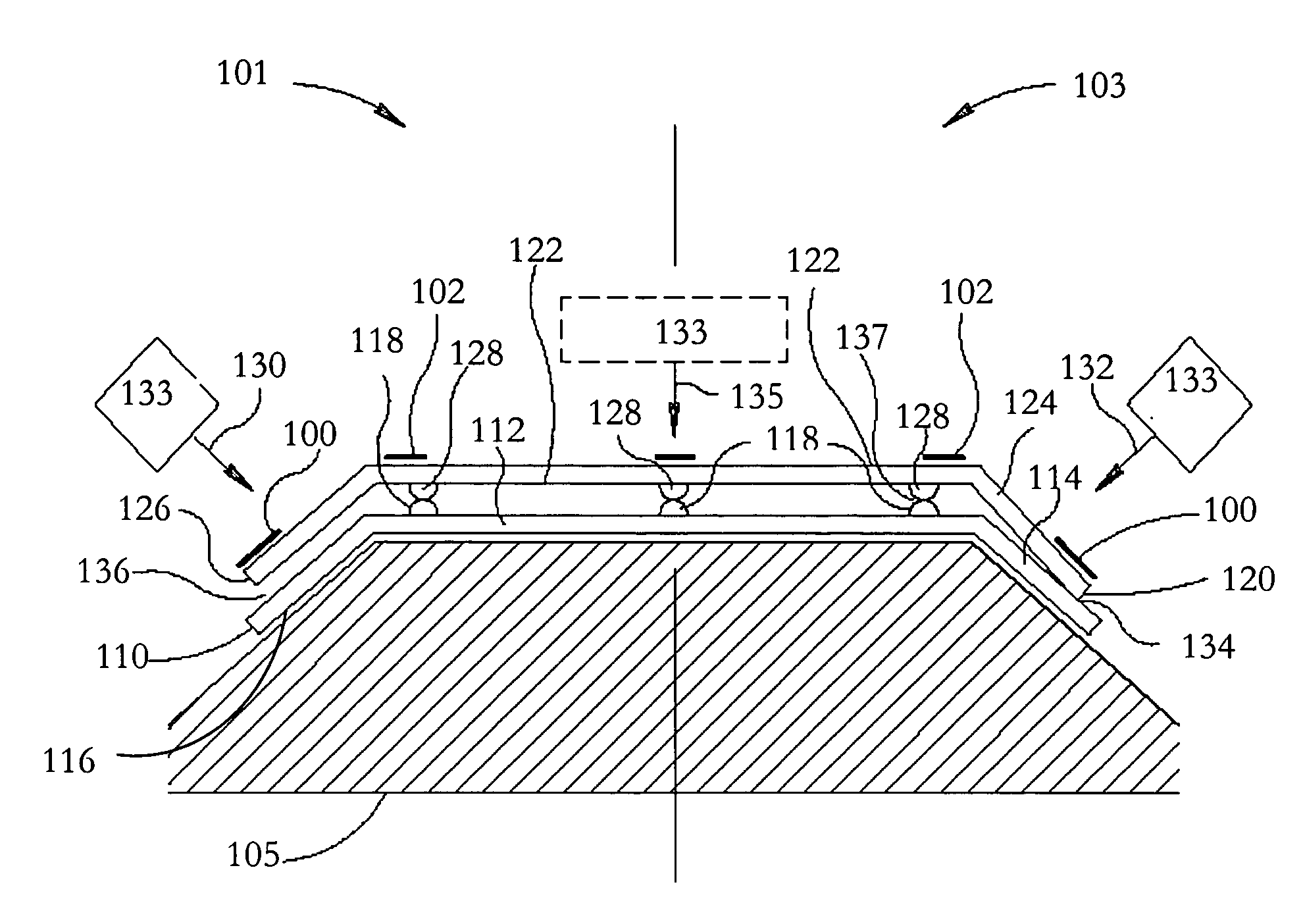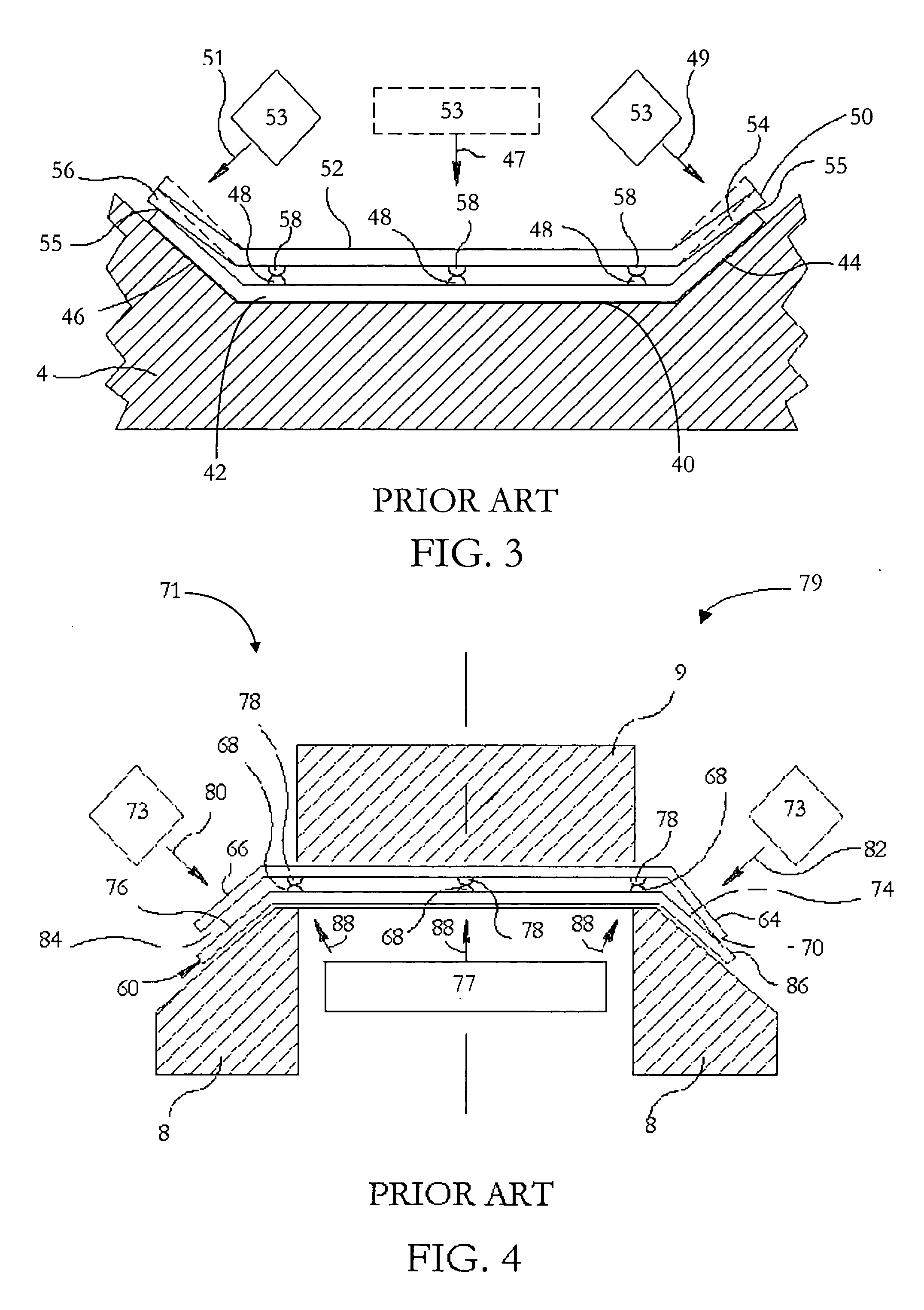Method for forming a heat exchanger stack
a technology of heat exchangers and stacks, applied in the field of heat exchangers, to achieve the effect of resisting electromagnetic impulse welding
- Summary
- Abstract
- Description
- Claims
- Application Information
AI Technical Summary
Benefits of technology
Problems solved by technology
Method used
Image
Examples
Embodiment Construction
[0048] The present invention discloses a means for facilitating electromagnetic impulse welding of a stack of heat exchanger plates together wherein the heat exchanger plates are formed from less conductive or even non-conductive materials which are substantially unresponsive to electromagnetic impulse welding, while reducing or preventing distortion of the plates.
[0049] Referring now to FIG. 5, there is illustrated an application in accordance with a preferred embodiment of the present invention. On the left side generally referenced 101 of FIG. 5, there is shown the disposition onto base 105 of lower plate 110 and upper plate 120 before welding and on the right, generally referenced 103, after welding. Prior to welding, there is an acceleration gap provided between opposing protrusions referenced 118 and 128. In addition, as an improvement to what is disclosed in the prior art U.S. Pat. No. 6,513,240, facilitating substrates referenced 100, which are substantially more responsive...
PUM
| Property | Measurement | Unit |
|---|---|---|
| resistance | aaaaa | aaaaa |
| electromagnetic impulse energy | aaaaa | aaaaa |
| kinetic force | aaaaa | aaaaa |
Abstract
Description
Claims
Application Information
 Login to View More
Login to View More - R&D
- Intellectual Property
- Life Sciences
- Materials
- Tech Scout
- Unparalleled Data Quality
- Higher Quality Content
- 60% Fewer Hallucinations
Browse by: Latest US Patents, China's latest patents, Technical Efficacy Thesaurus, Application Domain, Technology Topic, Popular Technical Reports.
© 2025 PatSnap. All rights reserved.Legal|Privacy policy|Modern Slavery Act Transparency Statement|Sitemap|About US| Contact US: help@patsnap.com



